Abstract
Total respiratory, pulmonary, and chest wall flow resistances were determined by means of forced pressure and flow oscillations (3-9 cps) superimposed upon spontaneous breathing in a group of patients with varying degrees of obstructive lung disease. Increased total respiratory and pulmonary resistances were found, whereas the chest wall resistance was normal or subnormal. The total respiratory and pulmonary resistances decreased with increasing frequencies. Static compliance of the lung was measured during interrupted slow expiration, and dynamic compliance was measured during quiet and rapid spontaneous breathing. Compliance was found to be frequency-dependent. The frequency dependence of resistance and compliance are interpreted as effects of uneven distribution of the mechanical properties in the lungs. The practical application of the oscillatory technique to the measurement of flow resistance in patients with lung disease is discussed. Measurements of total respiratory resistance by the forced oscillatory technique at frequencies less than 5 cps appear to be as useful for assessing abnormalities in airway resistance as either the plethysmographic or esophageal pressure techniques.
Full text
PDF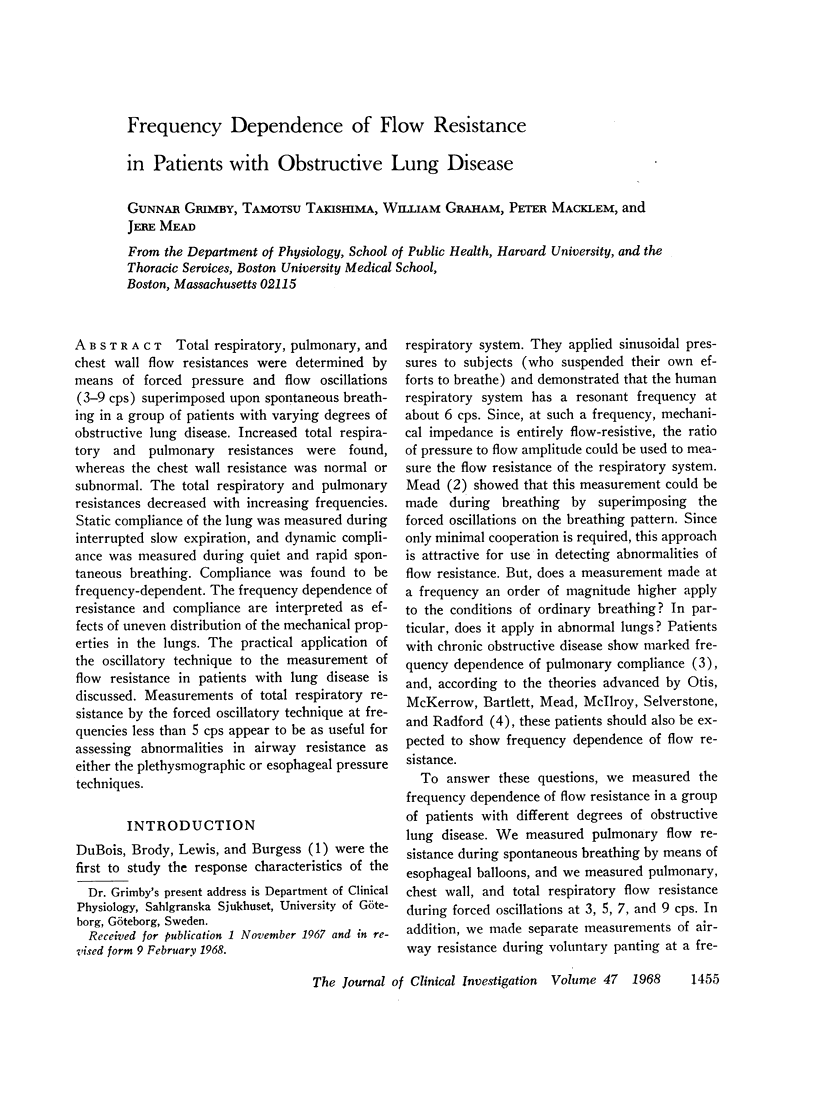
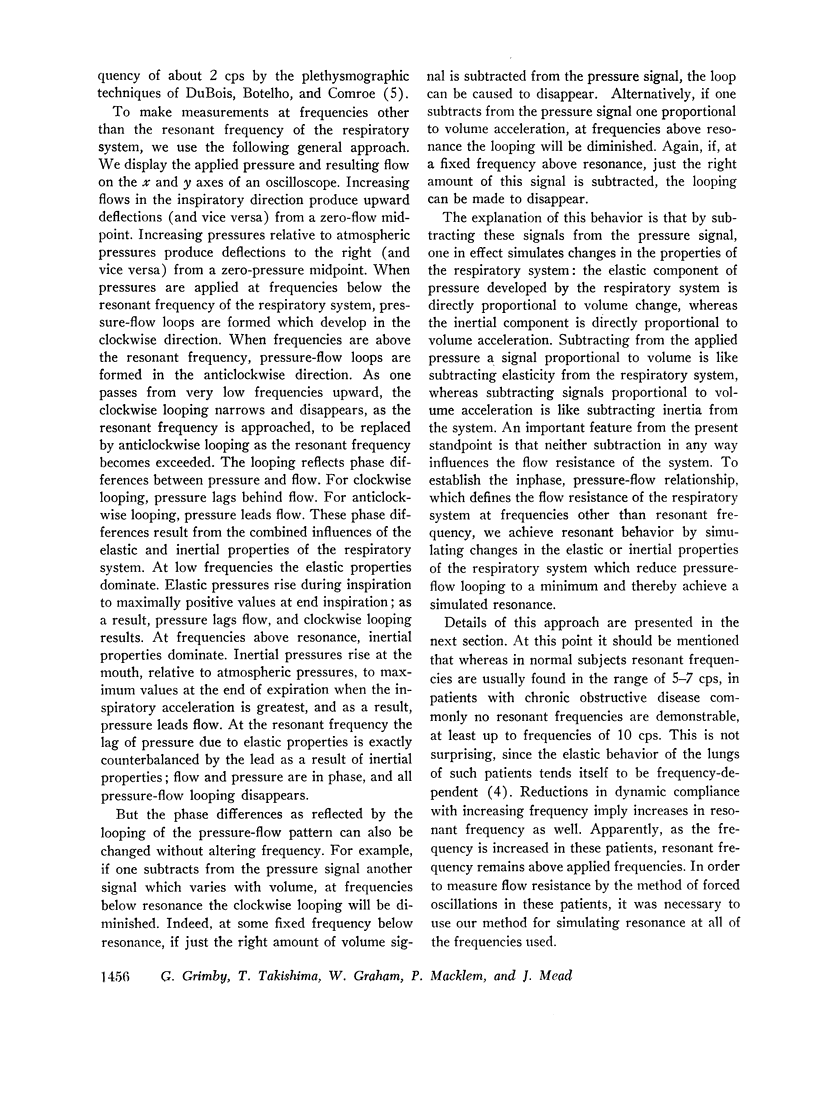
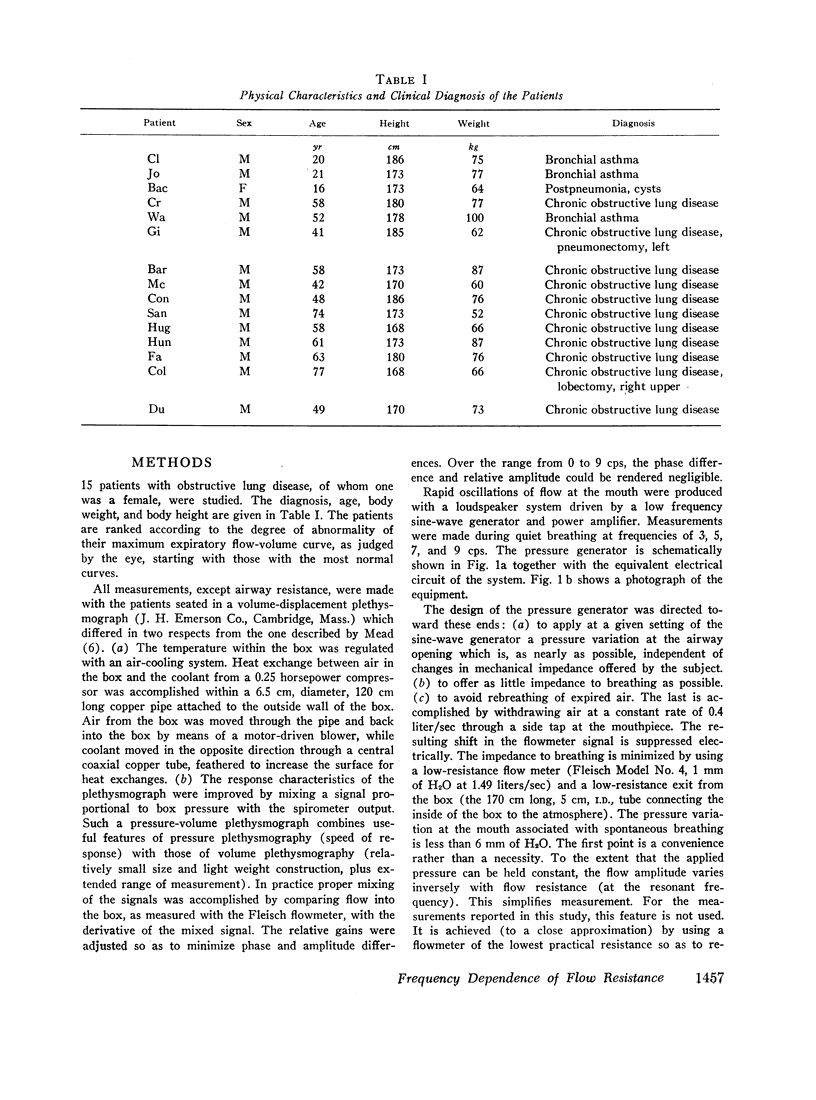
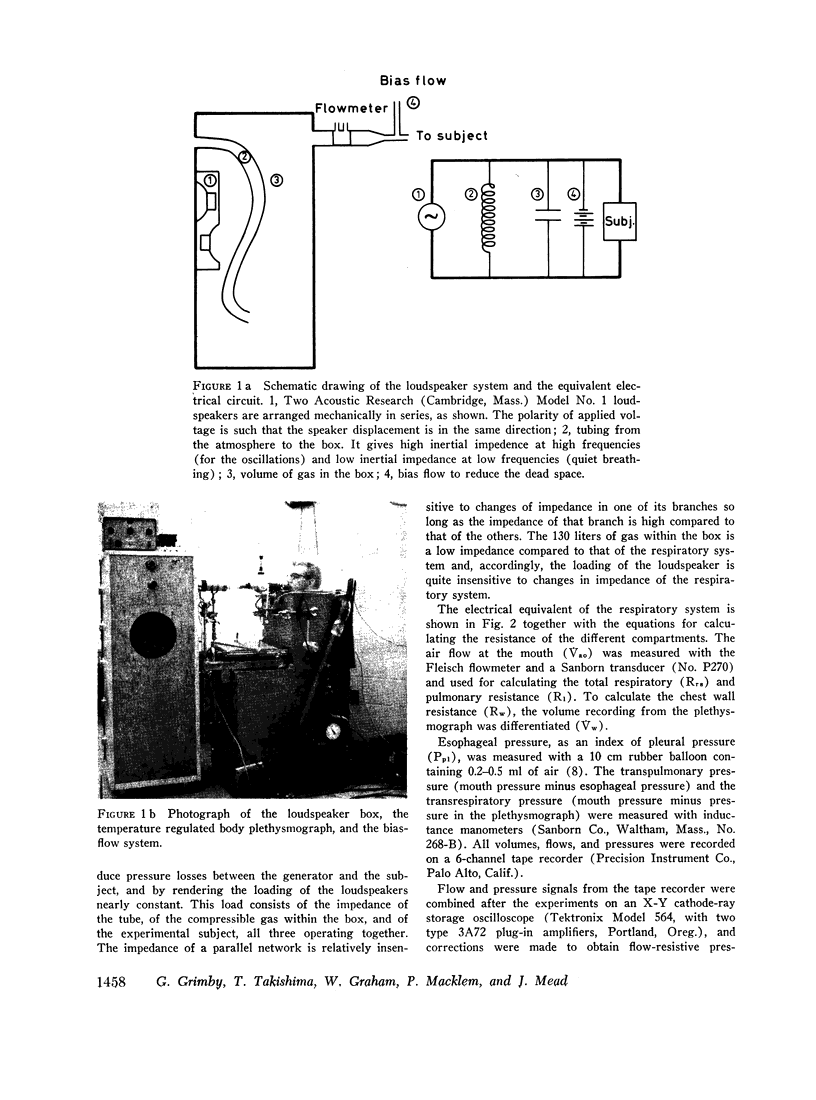

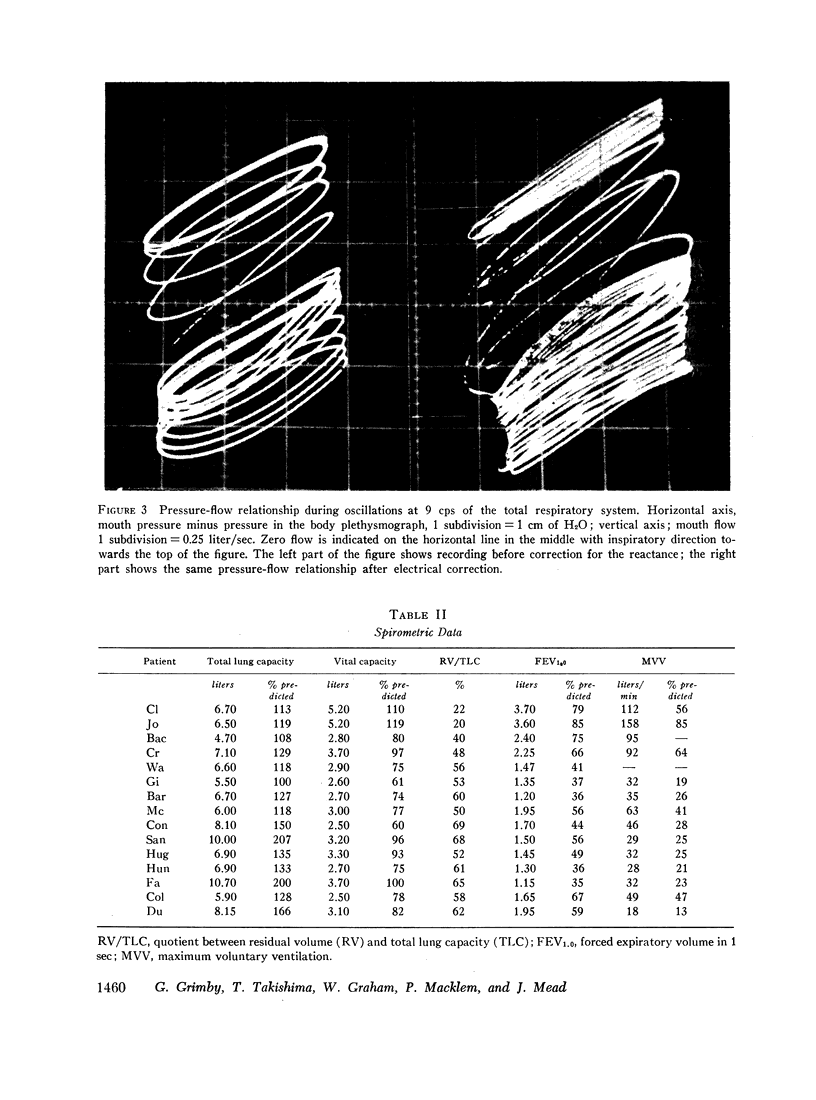
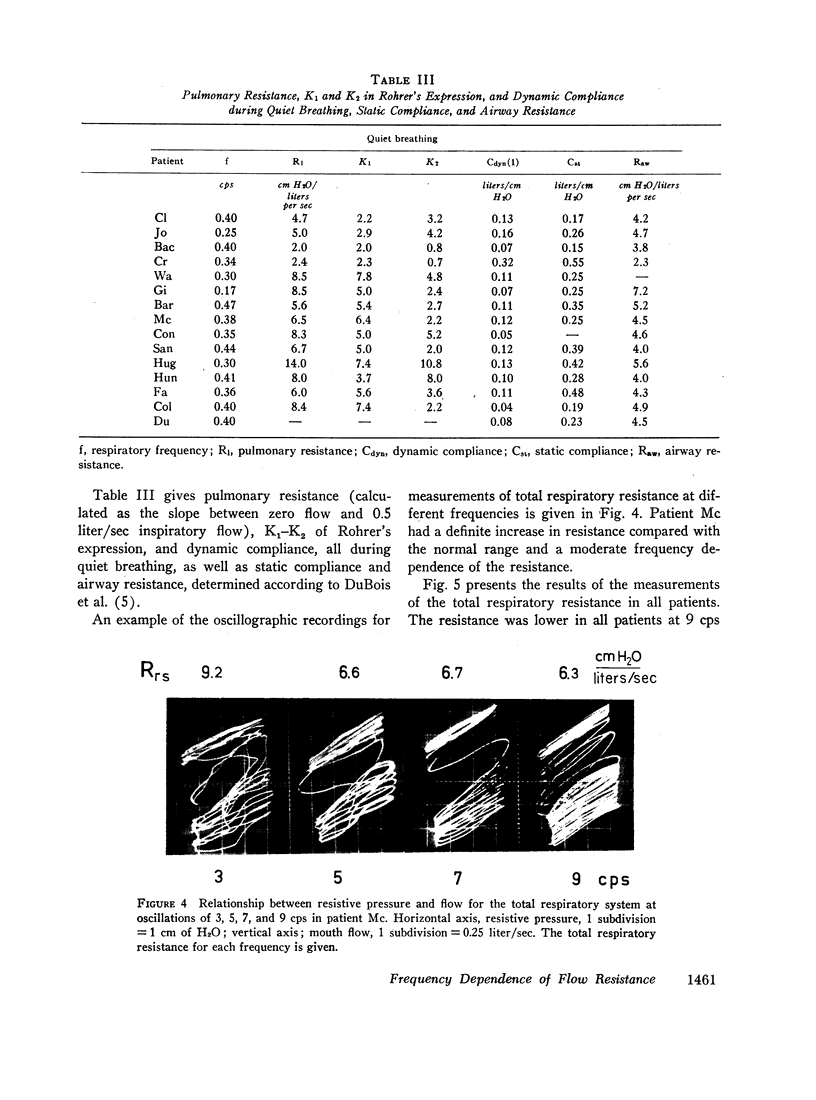
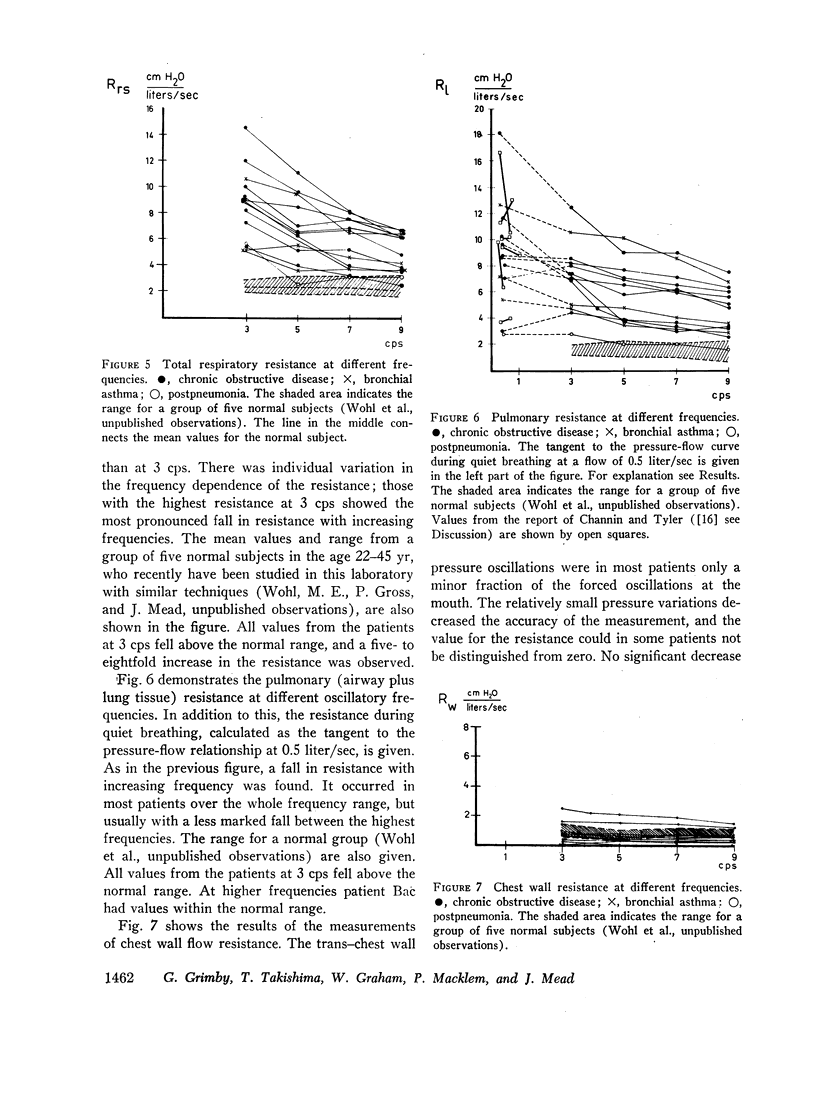
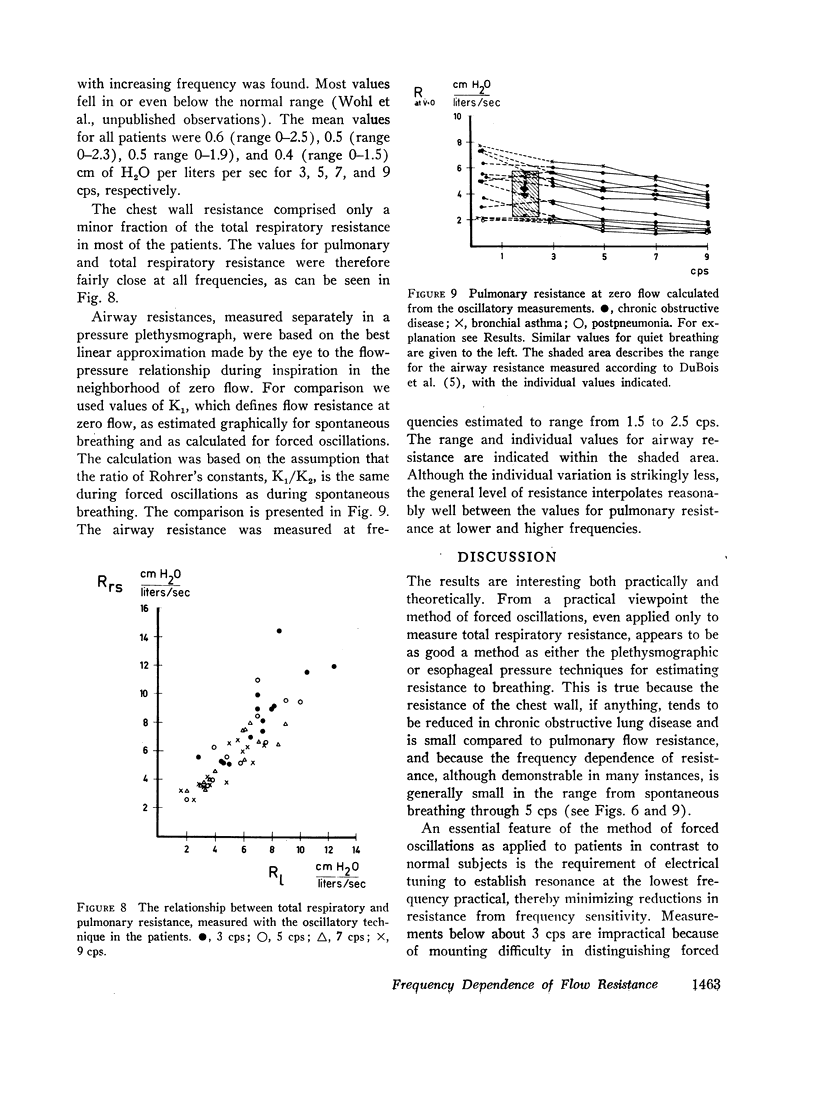
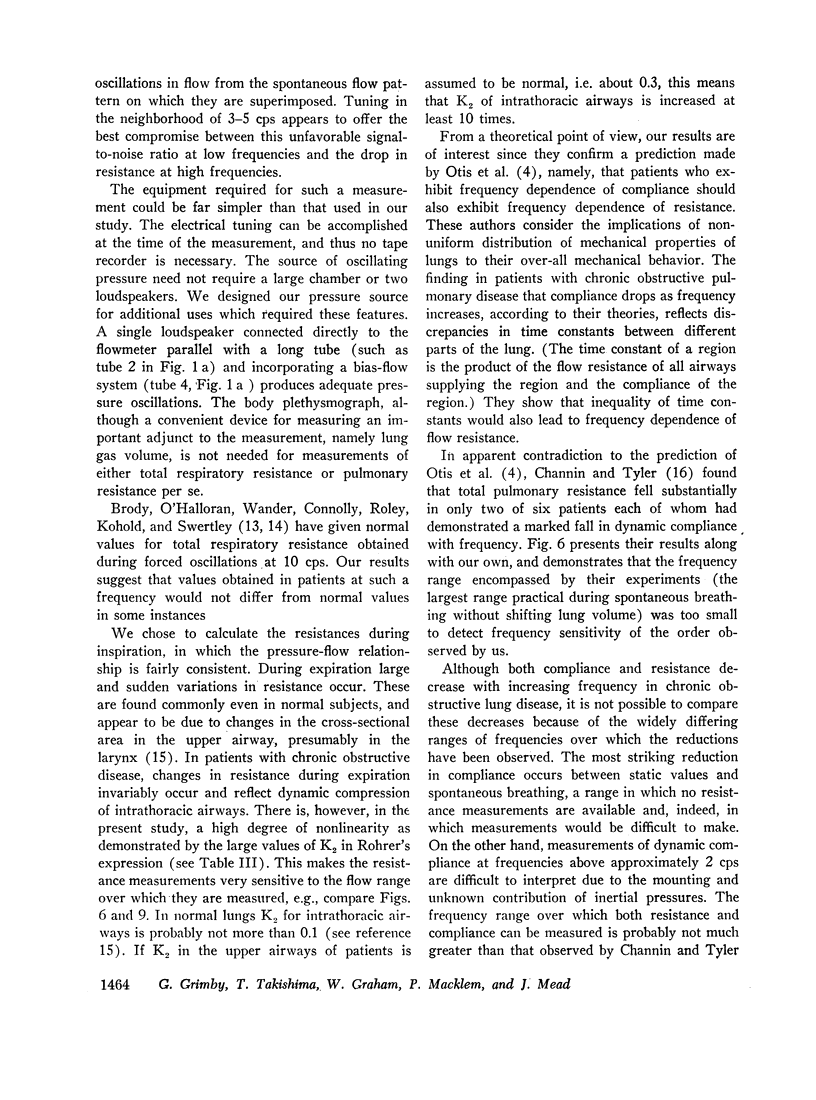
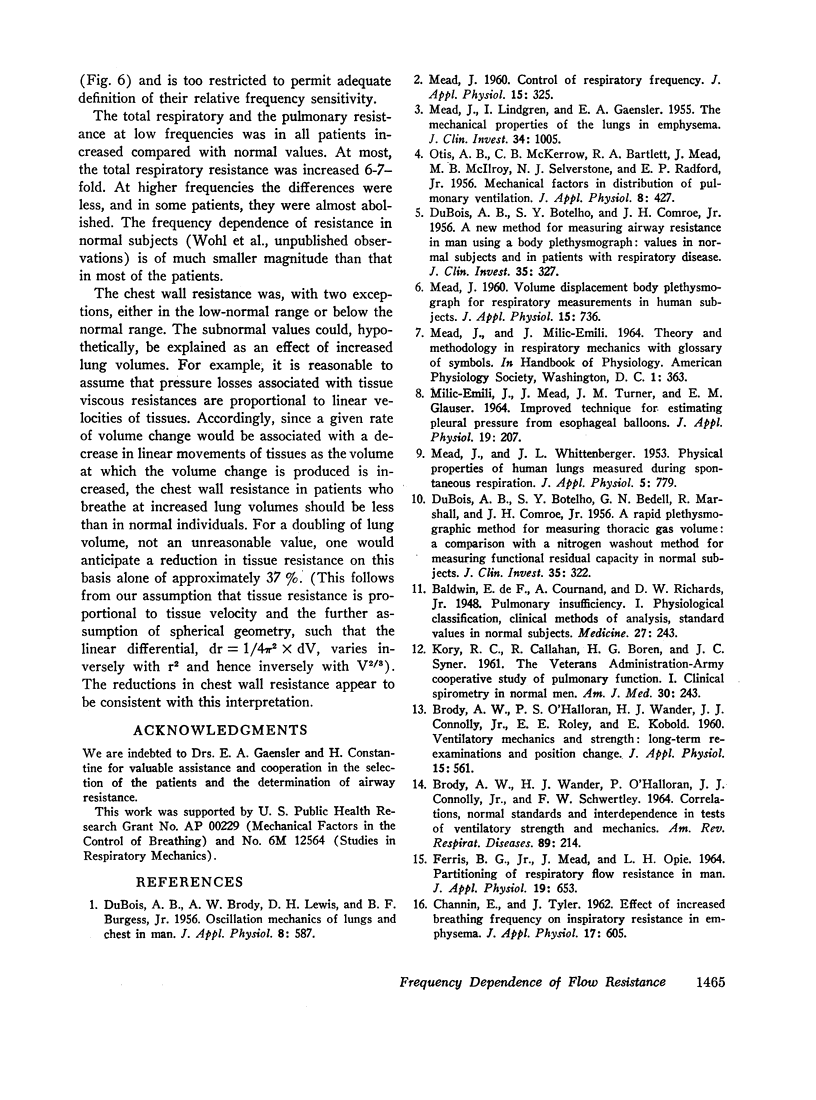
Images in this article
Selected References
These references are in PubMed. This may not be the complete list of references from this article.
- BRODY A. W., WANDER H. J., O'HALLORAN P. S., CONNOLLY J. J., Jr, SCHWERTLEY F. W. CORRELATIONS, NORMAL STANDARDS, AND INTERDEPENDENCE IN TESTS OF VENTILATORY STRENGTH AND MECHANICS. Am Rev Respir Dis. 1964 Feb;89:214–235. doi: 10.1164/arrd.1964.89.2.214. [DOI] [PubMed] [Google Scholar]
- CHANNIN E., TYLER J. Effect of increased breathing frequency on inspiratory resistance in emphysema. J Appl Physiol. 1962 Jul;17:605–608. doi: 10.1152/jappl.1962.17.4.605. [DOI] [PubMed] [Google Scholar]
- DUBOIS A. B., BOTELHO S. Y., BEDELL G. N., MARSHALL R., COMROE J. H., Jr A rapid plethysmographic method for measuring thoracic gas volume: a comparison with a nitrogen washout method for measuring functional residual capacity in normal subjects. J Clin Invest. 1956 Mar;35(3):322–326. doi: 10.1172/JCI103281. [DOI] [PMC free article] [PubMed] [Google Scholar]
- DUBOIS A. B., BOTELHO S. Y., COMROE J. H., Jr A new method for measuring airway resistance in man using a body plethysmograph: values in normal subjects and in patients with respiratory disease. J Clin Invest. 1956 Mar;35(3):327–335. doi: 10.1172/JCI103282. [DOI] [PMC free article] [PubMed] [Google Scholar]
- DUBOIS A. B., BRODY A. W., LEWIS D. H., BURGESS B. F., Jr Oscillation mechanics of lungs and chest in man. J Appl Physiol. 1956 May;8(6):587–594. doi: 10.1152/jappl.1956.8.6.587. [DOI] [PubMed] [Google Scholar]
- FERRIS B. G., Jr, MEAD J., OPIE L. H. PARTITIONING OF RESPIRATORY FLOW RESISTANCE IN MAN. J Appl Physiol. 1964 Jul;19:653–658. doi: 10.1152/jappl.1964.19.4.653. [DOI] [PubMed] [Google Scholar]
- KORY R. C., CALLAHAN R., BOREN H. G., SYNER J. C. The Veterans Administration-Army cooperative study of pulmonary function. I. Clinical spirometry in normal men. Am J Med. 1961 Feb;30:243–258. doi: 10.1016/0002-9343(61)90096-1. [DOI] [PubMed] [Google Scholar]
- MEAD J., LINDGREN I., GAENSLER E. A. The mechanical properties of the lungs in emphysema. J Clin Invest. 1955 Jul;34(7 Pt 1):1005–1016. doi: 10.1172/JCI103150. [DOI] [PMC free article] [PubMed] [Google Scholar]
- MILIC-EMILI J., MEAD J., TURNER J. M., GLAUSER E. M. IMPROVED TECHNIQUE FOR ESTIMATING PLEURAL PRESSURE FROM ESOPHAGEAL BALLOONS. J Appl Physiol. 1964 Mar;19:207–211. doi: 10.1152/jappl.1964.19.2.207. [DOI] [PubMed] [Google Scholar]
- OTIS A. B., MCKERROW C. B., BARTLETT R. A., MEAD J., MCILROY M. B., SELVER-STONE N. J., RADFORD E. P., Jr Mechanical factors in distribution of pulmonary ventilation. J Appl Physiol. 1956 Jan;8(4):427–443. doi: 10.1152/jappl.1956.8.4.427. [DOI] [PubMed] [Google Scholar]





